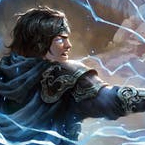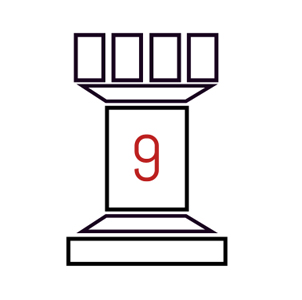
Ira has always been a bit of a challenging matchup for Wizard players to deal with: high blue counts, 4 Nullrunes, and a unique ability to threaten a not-insignificant amount of damage with weapons while maintaining almost the entirety of their hand for blocking. But it has always felt winnable with the correct punishing windows and combo setups. A new change, however, has considerably altered the direction of the reigning top tier and has made them into an even greater threat: the ban of Drone of Brutality.
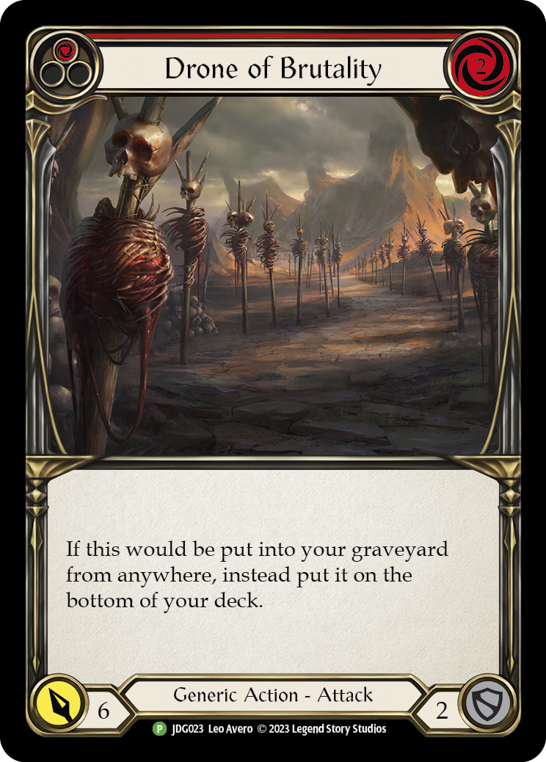
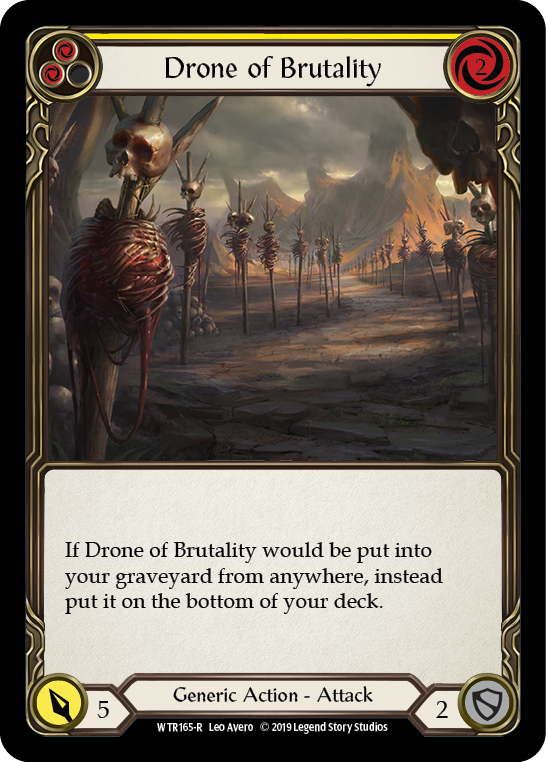
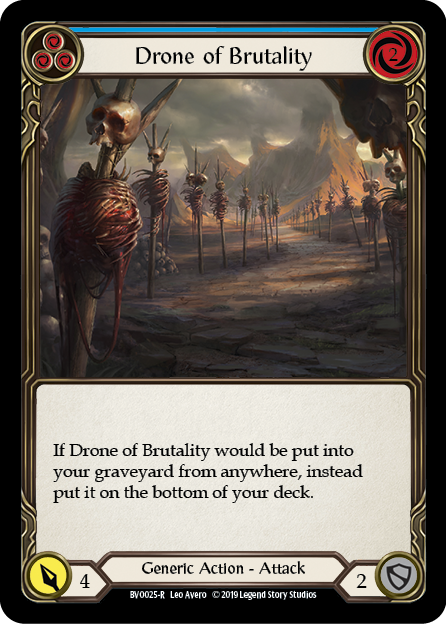
For a while now, the New Zealand meta has slowly been shifting from pure control towards aggressive Ira, with some considerable success. However, the new ban on Drone of Brutality has begun to turn the patient, vengeful ninja into a bloodthirsty torrent of kicks and blades on a worldwide scale. At first, the consensus on the new change was that Drone of Brutality would be replaced with a more usable card that blocked for 3, as Drone was only included to avoid a loss in the Ira mirror match. This was thought to be a slight improvement; however, since my experience in the Good Games Central Skirmish on the 27th of March, I can already feel the dominoes starting to fall.
I legitimately believe that Ira just got better in blitz; the fact that I get to cut two of my block-2s for block-3s, ‘cause I was only playing them for the mirror anyway... Drone is the worst card in every other matchup.
What is the Replacement?
Drone of Brutality is dead. Long live Hurricane Technique!
Hurricane Technique is everything an Ira player wants, and it has already seen success in New Zealand even before the Drone of Brutality ban. It costs 1, has high stats for cost, blocks for 3, and has the Combo keyword. On the surface, it fills a similar role as Torrent of Tempo and Pounding Gale in control Ira, where a strong 1 cost card would be played after 2 weapon swings off of a 1 card pitch. This is a great reason for the card to be included, but after my experience in my most recent skirmish, the tempo potential of this card is phenomenal. The Combo effect of Hurricane Technique is likely the strongest available to Ira in terms of winning tempo, and its activator, Rising Knee Thrust, is already a mainstay in Ira decks as a blue, 0 cost, 3 block, combo card, so all you need is a Go Again for Rising Knee Thrust. From the removal of Drone, you suddenly have a very reasonable justification for running red Leg Tap in your Ira deck, one of the most aggressive cards ever printed in Flesh and Blood.
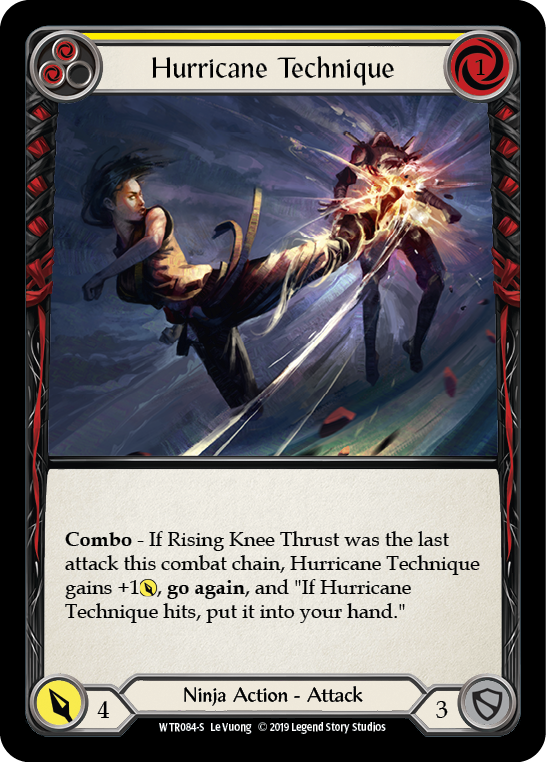

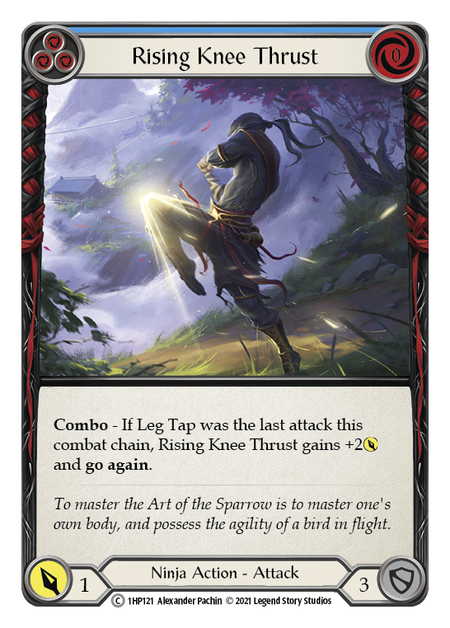
Another thing driving Ira decks towards increased aggression is the overall cost reduction of the deck. Without Drone of Brutality costing 2 and filling out the midgame and endgame of the deck, Ira players may find it viable to cut out a set of blues and replace them with a far more threatening card. While this may have been on its way already in New Zealand, in the Australian and American metas, where pure control Ira was significantly more represented than the newer beast, this is going to be a major shift in the playstyle of Ira and in the decks that have struggled against it.
What Else to Look Out For
Once again, I am several weeks late to the trends in New Zealand, but there are a handful of new inclusions that are making this new aggressive shift as threatening as it is.
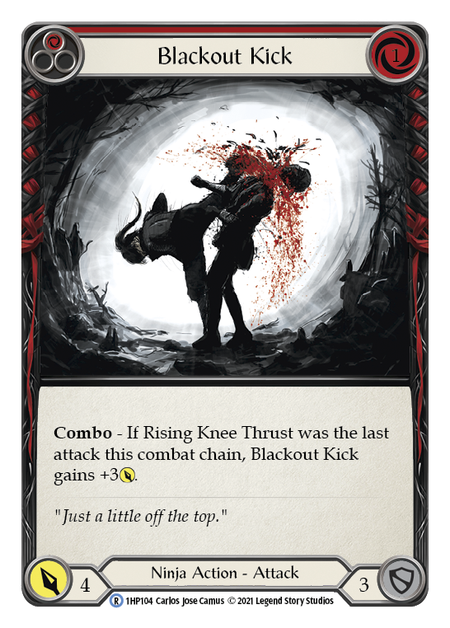
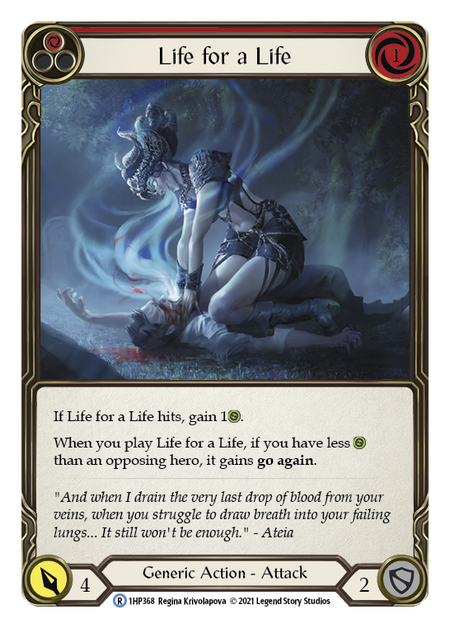
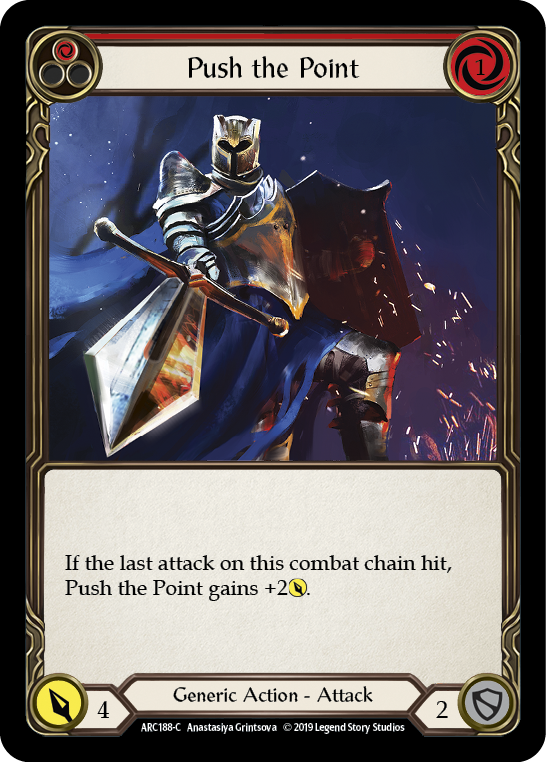
For a while now, Life for a Life has been used to great success in the more tempo-focused Ira decks, capitalizing on the number of decks without 4-block defence reactions, and being a 1 cost, high value attack to fill out the weapon-weapon-attack style of turn. The on-hit threat of gaining 1 life is quite considerable in blitz format, and if a deck doesn’t have a way to easily handle the card it ends up netting a huge positive in Ira’s favour. It hasn’t seen as much use outside of Oceania due to the heavier control focuses, but it is a phenomenal card and is, in my opinion, a core piece to the new build.
If an Ira player focuses harder on the leg combo with Leg Tap and Hurricane Technique, then Blackout Kick is a no-brainer. At worst it's a 1-cost for 4 with 3 block and combo, filling out the same niche as all of the other 1-cost attacks in Ira’s arsenal; but at best, it's a 1-cost attack for 7 damage, posing insane, possibly game-ending threat for incredibly cheap. In the mid-game without its combo activation, it isn’t as strong as some of the other pieces in the deck, but the payoff when you get the combo is phenomenal. It is playstyle dependent, but definitely has a lot of potential.
Push the Point is a recent addition, being a 1 cost for 7 attack (after Ira adds a final +1 to it) like Blackout Kick. Being able to activate its ability off of your first Kodachi swing, which almost never goes blocked, makes it an incredibly cheap, high-threat, and consistent card. In addition, it lets you float 1 resource from a blue pitch, threatening Razor Reflex or another strong follow-up from Snapdragon Scalers. Its only weakness is being a 2-block, which is becoming less and less relevant, and not having the Combo keyword, which it makes up for in its consistency on the offense.
Nick Butcher’s most recent list runs all of the above aggressive cards. It also features a few other interesting ideas, such as yellow Rising Knee Thrust and cutting Sigil of Solace, which has been a core card since the beginning of the format. In addition, Nick Butcher’s infamous Zephyr Needle (which he infamously uses even against warrior) has been a staple to his aggressive Ira playstyle. The deck recently went 8-0 at Good Games Central Skirmish
My list good.
Where Does Wizard fit in?
Wizard, at present, is undeniably one of the best decks in the Blitz format, being able to capitalize on weaknesses like no other deck to deal amazing amounts of near-unblockable damage. But the new shifts to Ira, our greatest challenge, are going to be difficult to overcome. Kano’s saving grace against the older, control Ira build was that, like many control decks, the threat it could output on its turn is relatively small, usually only 8 or 9 damage at most from a 2-card hand. This allowed Wizard some time to set up or force open windows, turning Ira’s 4 Nullrune against them in the tempo battle. The issue now is that Ira no longer struggles to generate threatening damage in a single turn.
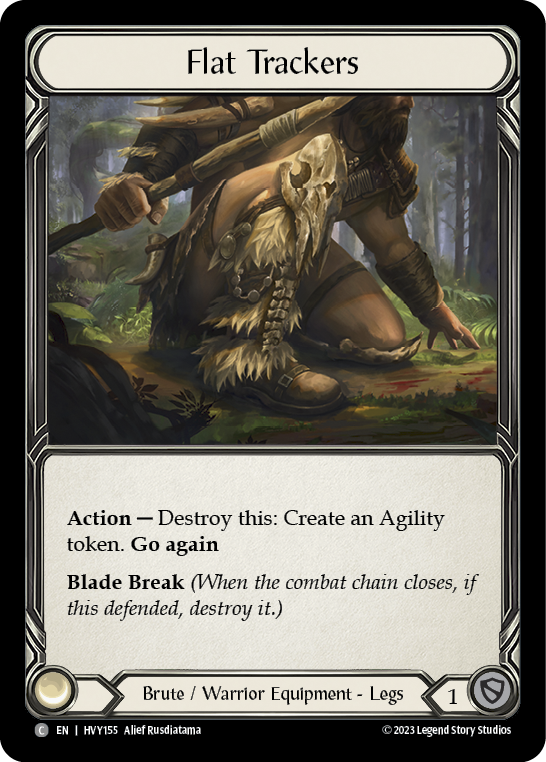
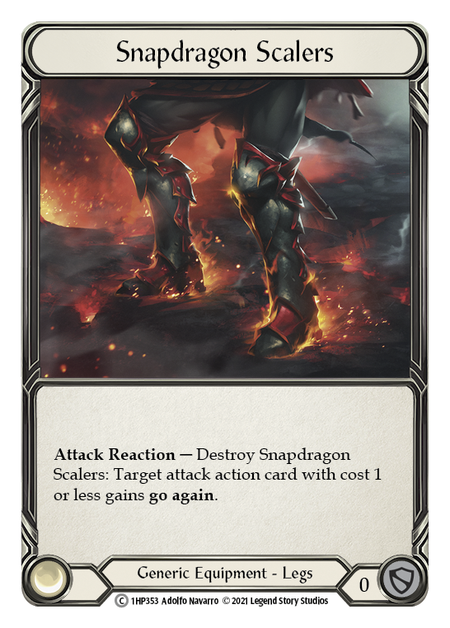
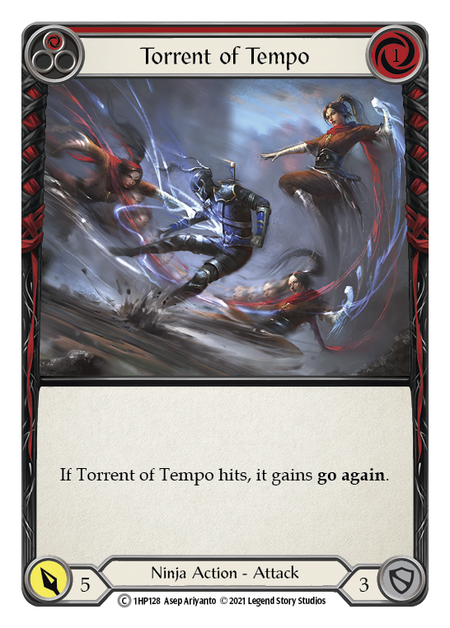
I’ve had the privilege of playing (and losing to) Nick Butcher’s Ira, and a few things have come to light about the new style. First, 4 Nullrune is a relic of the past. Very similar to Warrior now, Ira players will play 3 Nullrunes and Snapdragon Scalers, allowing them to find incredibly punishing blowout turns that can instantly win tempo in their favour, if not the game outright. In addition, playing 3 instead of 4 Nullrune means it is incredibly difficult to prompt Ira players to block with 2 cards from hand, making it easier to win damage but far more difficult to keep their aggression at bay. In my opinion, the most difficult cards for Kano to deal with in the current build are Life for a Life and Torrent of Tempo. Life for a Life because Kano currently does not run any efficient 4 blocks to avoid the on-hit life swing; and Torrent of Tempo because an Ira starting their turn with a Torrent and an active Snapdragon Scalers and a full hand is a near-unbeatable turn. The threat of Razor Reflex and of Snapdragon Scalers is too great for there to be any correct blocking play at all.
Playing the Tempo Game

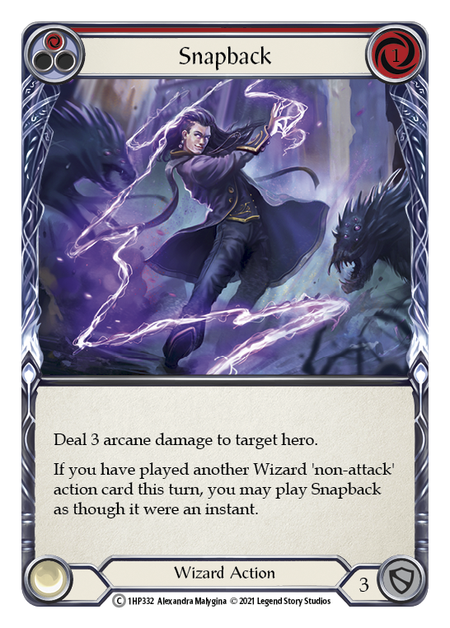

With the days of 4 nullrune gone, easy tempo wins such as Aether Spindle, Sonic Boom, and Lesson in Lava are no more, so Kano needs some new tricks for the matchup. Your goal should be to make your opponent block with 2 cards every turn, so you can force an opportunity at the end of theirs. A single card is no longer good enough, so I believe this is where the small-spell wizard archetype might be able to see play. A key card into the matchup will be Snapback, letting you threaten a second attack with extremely minimal investment. While on the surface it feels like a poor damaging card with very little payoff, giving your opponent an easy block on your second threat of the turn is a great way to bait them into opening up their defences on the turn following, or choosing to hold resources and not output the same level of threat.
Other cards that allow you to threaten multiple sources of arcane damage on your turn include Sonic Boom, which now can always deal damage with a Crucible of Aetherweave buff and get through Ira’s new 3-nullrune loadout, and Chain Lightning, which is the quintessential extender for small spell wizard. While Ira is still a very threatening deck on a 2-card hand with an arsenal, you will be able to put them into the rare position where all of the cards they have available are on the table, and you can capitalise on that opening to find your damage. This is an extremely risky strategy, but the current Stir-Forked combo idea is no longer going to be consistently available as you contest harder for tempo. This style of play may become mainstream for wizard builds, with a precursor to it being run by Jasin Long at the Calling Auckland to much success, and with the last mainstream deck in the format running 4 arcane barrier being Guardian, there aren’t many present matchups that can punish small spells, however your local meta may vary.
Playing the Midrange Game
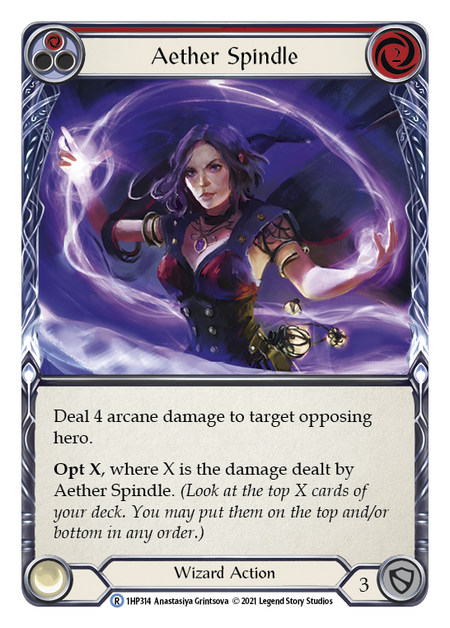

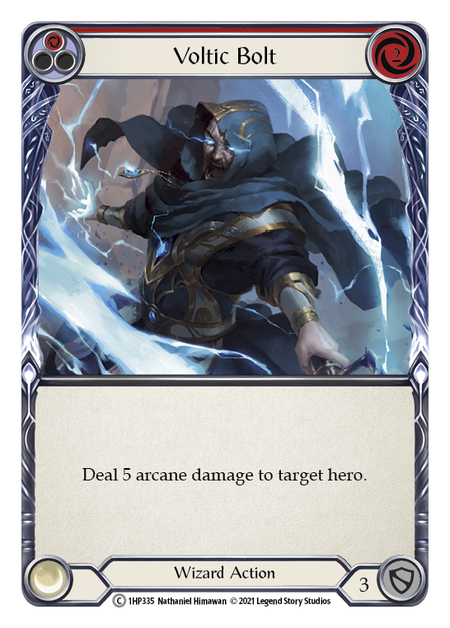
This is a less viable strategy in the Blitz format, but as a constructed Wizard player I am very familiar with the turn cycle of blocking with 3 cards, setting a 2-cost burn in arsenal, blocking with 3 cards, and playing your burn spell off of a blue, buffed with Crucible of Aetherweave. This has been the go-to strategy against aggressive decks and midrange decks with 3 arcane barrier in constructed since the release of Crucible of War, and it could have some potential against the new-age Ira. The weakness of this playstyle compared to small spell mage, however, is that it leaves Ira on a 3-card hand instead of 2, which is a considerably greater threat. The upside to this style is that you have one more blocking card available to you.
Playing for midrange chip damage could be viable, however the meta is young enough that I have yet to be able to test either midrange styles or small-spell styles in earnest. A large upside to the midrange style, however, is that you do not need to make changes to your deck that will lose you the game against control Ira or other 4-nullrune decks. Every current wizard deck is able to play for the midgame, as well as have the inclusion of their combo engine.
What Cards Could Become Good?
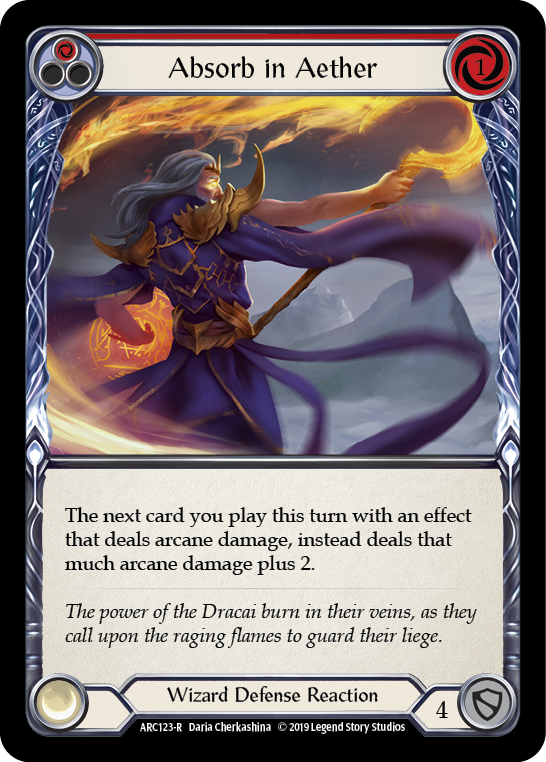
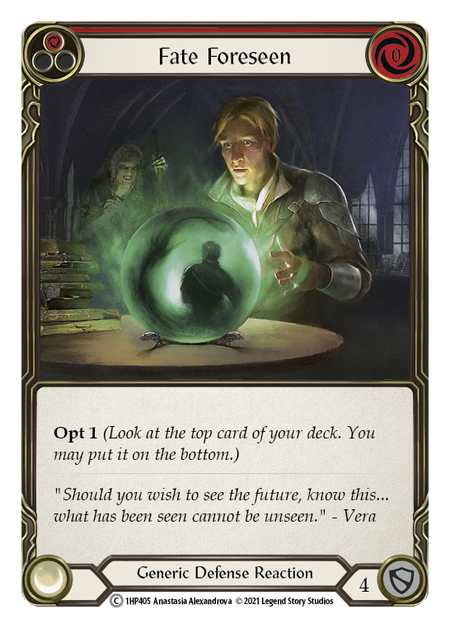
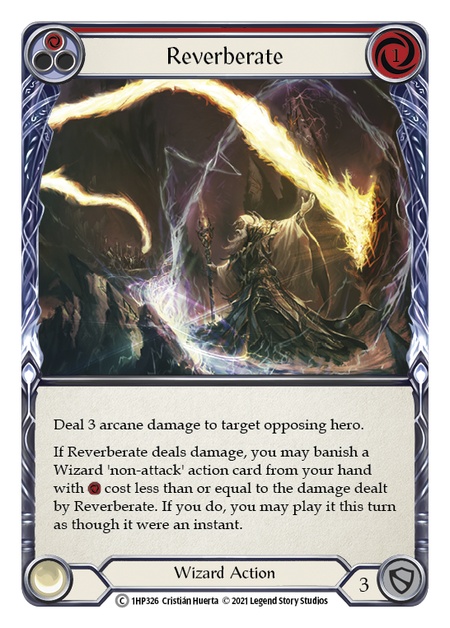
With the kingpin of Blitz no longer running 4 Nullrune pieces, there is suddenly real merit to running 1 or 2 copies of Red Reverberate in your deck. In small-spell wizard, a single blue, a reverberate, and any of your 1 cost spells allows you to chip in 1 with Reverberate and get a guaranteed follow up from a 2-card hand, provided Reverberate is in your arsenal. This is the second-most consistent way to threaten 2 sources of arcane damage against new-age Ira, after Snapback. Depending on how unanimous the Ira player-base is that this new build is the future, Reverberate could absolutely be the sleeper pick of the format.
A long-held debate in the Wizard community has been about the inclusion of defence reactions in the deck. With Zephyr Needle becoming more and more prominent thanks to players such as Nick Butcher, having the ability to break it in the early game severely lowers the amount of damage aggressive Ira can output on an average turn. Blue Unmovable has long been the accepted defence reaction to include, if you include them at all, for its consistency and usability as a pitch card, but I think there could be more options.
Absorb in Aether is, in my opinion, one of the most underused cards in a Wizard’s kit, and is an extremely valuable inclusion into the small-spell wizard build, where your 2 floating resources from pitching for 3 to play Absorb can translate into a buffed Reverberate or Lesson in Lava. Initially I was sceptical about the viability of this card, but being able to block for 4 while threatening 6, and potentially keeping a card to arsenal on your turn, is a pretty great trade-off. The downside is that it is an incredibly expensive card to play and make work, and can damage your matchups against other decks.
Absorb in Aether is, in my opinion, one of the most underused cards in a Wizard’s kit.
The other option that I can see is Fate Foreseen. Without the additional card requirements of Unmovable and Absorb in Aether, Fate Foreseen is incredibly consistent and reduces the amount you need to use Kano blind. It still defends enough to break Needle, and can set you up to find a powerful card in the opening at the end of your opponent’s turn. Unfortunately, Fate Foreseen needs to be run in the red cycle, which can make it inconsistent when it finds its way into your hand unwanted, and it is a very poor card against the wizard mirror and Runeblade, however if neither are highly present in your local metagame then foresee away, my friend.
These are all speculative ideas; however, I believe the meta will be shifting enough to see some distinct changes in the way Kano plays in blitz because of how poor its matchup against new-age Ira currently is. Adaptation is key to winning in Flesh and Blood, and I am incredibly curious to see what the future has in store for the blitz scene.
The Meta Moving Forward
Despite early community concerns of a Drone of Brutality ban hurting the prospects of Ira, the deck seems to be stronger than ever, with an ever-growing package of threatening attacks, while keeping Flic Flak in its core to maintain its ability to wall out wide aggressive decks. Ira is looking to root itself even deeper into the tier 0 slot, as its improved aggression allows it to actively contest tempo with its primary rival, tall warrior, as well as considerably improve its matchup against the other reigning top tier, Kano.
Drone of Brutality has become the first Flesh and Blood card to be banned from the two major formats! What does this mean for the game?
by: Steven Young
Going forward, I see [Ira] being a much more aggressive style deck that can still defend exceptionally well… I’m sure we should see the meta shift and decks look to punish Ira for trying to go wide.
So Ira gets stronger, how do other decks adapt? Looking wider at the state of the meta as a whole, in my view, contesting new-age Ira has a two-fold approach. First, the deck’s primary weakness is the number of 2-blocks that it now can include, meaning that tempo decks that severely punish poor blocking hands may be able to punish these new builds. In this idea, tall warrior seems like the go-to option, and it certainly can be if it gets ahead on tempo, but once it falls behind it is an incredibly uphill battle; and it only takes one bad hand. Instead, I would love to see the top-tier deck in CC make its way into blitz, hybrid warrior. With unconditional go-agains and a small mixture of attack actions with the classic tall warrior package, I think warrior may have the means to maintain a tempo advantage, even through Flic Flak. This may be a little too hopeful, but the potential bluffs and mix-ups and tempo cards available could make hybrid warrior a viable option, if tall falls short. Another rogue pick could be tempo Runeblade, punishing the higher quantity of reds and prompting the Ira player to block with more cards than is efficient.

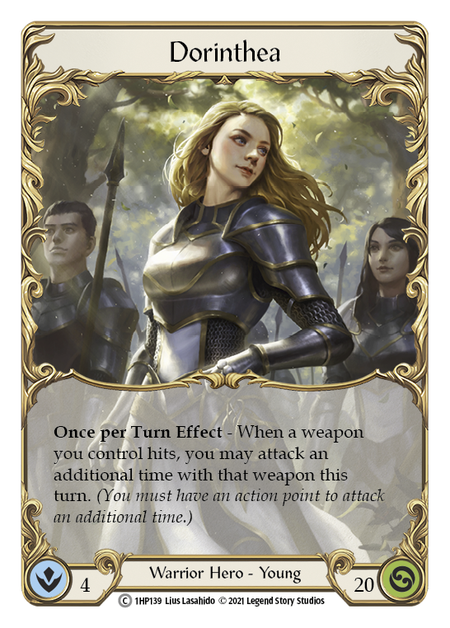
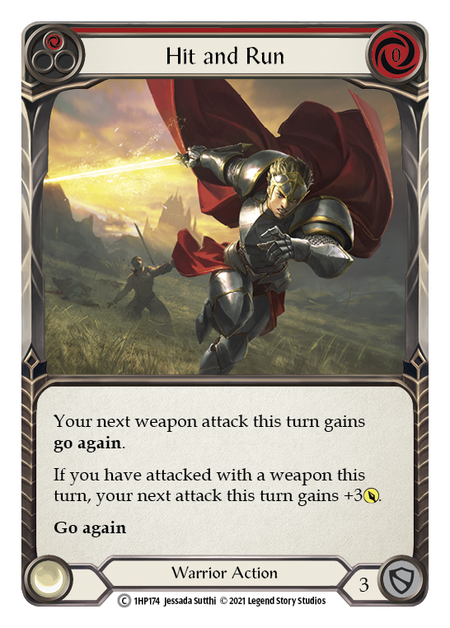
Secondly, new Ira leans far more aggressive, and the age-old way to beat aggressive decks? Control. Cayle McCreath has recently said that he believes Guardian is now able to out-fatigue Ira, which I personally am not sure about the viability of, but as the quintessential control deck Guardian may be a valid answer against Ira now that Ira’s primary late-game strategy, Drone of Brutality, is gone. I don’t know enough about either deck to truly know how the dynamic will play out, but I am certainly excited to see more Bravo representation. I’m not certain how this new Ira change will affect OTK Viserai, the kryptonite to control Ira, but a Runeblade player coming 3rd in the Good Games Central Skirmish, nearly beating Nick Butcher himself, bodes well. Personally, I would love to see control Brute with Romping Club making an appearance, having the most consistent weapon in the game and amazing blocking potential, all while being able to set up a 4-intimidate smash in the late game, but again this may be a little too hopeful for Rhinar.


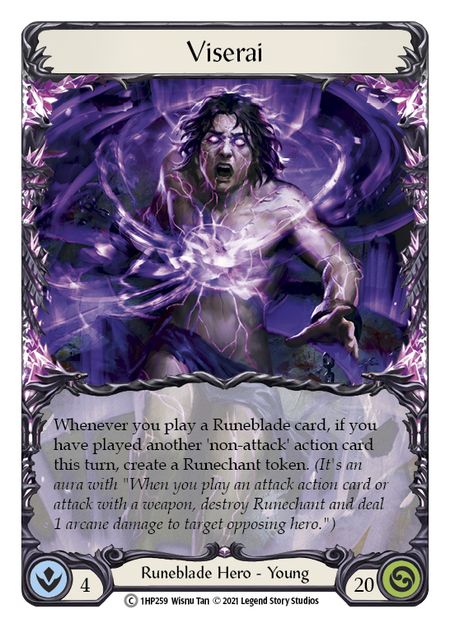
Unfortunately, with Skirmish season about to come to a close, it is unlikely that we will see this new meta come to fruition; however, I do have some top picks for what you could sneak into your next blitz event as a surprise meta-killer.
- Midrange Runeblade
OTK Runeblade has been a killer of control Ira for some time, however hasn’t made it deeper into the metagame because of its comparably poor matchups to some other key classes, such as wizard and warrior. Midrange Runeblade, running pummels, sloggism, and playing for tempo has the same immense threat of the OTK while being able to bully their opponents into submission in the midgame. - Midrange Club Brute
As mentioned above, this may be a bit hopeful, but Brute has one of the best defensive capabilities as well as one of the strongest endgame payoffs for playing in a defensive fashion. Brute has the survivability to deal with Ira, with the best anti-aggro weapon in the game, and the damage to pull out a win with a 4-intimidate Barraging Beatdown blowout in the late game. - Pistol Dash
Without the late game torrent that is Drone of Brutality, there is considerable viability in trying to out-control the game against an Ira player, and there aren’t many decks with a better late game than Pistol Dash. There are some notable weaknesses, like running a lot of 0-block items, but the payoff may just be good enough to be able to take out Ira in her own format.
I am no wiz at analysing how the meta will develop from here and how different decks will adapt to the changes, and the state of the game could throw a curveball and show a new deck to contest Ira. Could we see aggro Katsu? Nebula Blade Viserai? Pummel Dash making a surprise showing? Dominate disruption Azalea? There are a great deal of decks out there that have yet to see success, and I’m hopeful for all of them, but one way or another Ira is still the deck to beat.
Special thanks to Hayden Dale, Nick Butcher and Davis Kingsley (a.k.a TowerNumberNine) for their insights into the shifting meta dynamics coming to the blitz scene.



